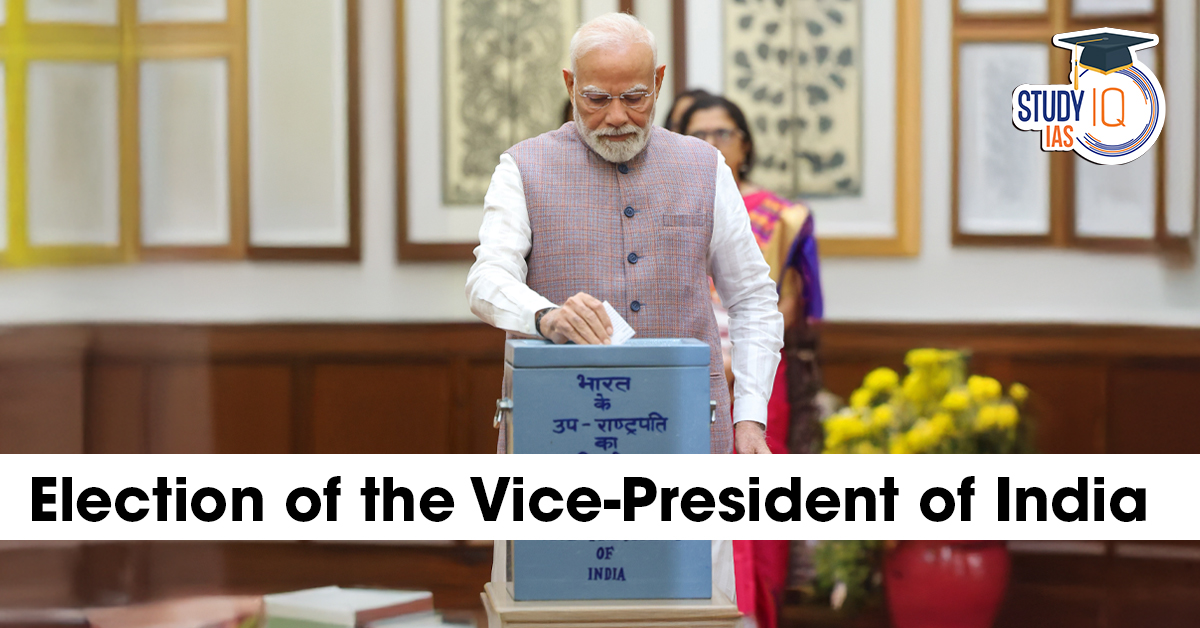Table of Contents
In a closely watched contest, Maharashtra Governor C.P. Radhakrishnan has been elected as the 17th Vice-President of India on September 9, 2025. Backed by the ruling National Democratic Alliance (NDA), Radhakrishnan secured a decisive victory over the Opposition’s joint candidate, Justice (Retd.) B. Sudershan Reddy. The election witnessed a high turnout with 98.2% of the electoral college exercising their franchise, reflecting the significance of this constitutional office.
Vice-Presidential Election 2025: Results at a Glance
-
Winner: C.P. Radhakrishnan (NDA nominee)
-
Votes Secured: 452 first preferential votes
-
Opponent: Justice (Retd.) B. Sudershan Reddy (Joint Opposition candidate)
-
Votes Secured: 300 first-preferential votes
-
Invalid Votes: 15
-
Abstentions: 14 MPs
-
Electoral College Strength: 781 (after accounting for vacancies)
-
Total Votes Cast: 767
Radhakrishnan won with a margin of 152 votes, highlighting not only the NDA’s dominance but also possible cross-voting from Opposition MPs.
What is the Election of the Vice-President of India?
The Vice-President of India is the second-highest constitutional authority in the country, acting as the ex-officio Chairperson of the Rajya Sabha (Council of States). The Vice-President also assumes the duties of the President of India in case of vacancy due to resignation, removal, or death.
The Vice-President is elected by an Electoral College consisting of members of both Houses of Parliament, i.e., the Lok Sabha and the Rajya Sabha. This election is conducted by the Election Commission of India (ECI) under the constitutional framework and specific laws.
Process of Election of Vice-President
- Electoral College: Comprises members of both Houses of Parliament (Lok Sabha + Rajya Sabha).
- Unlike the President’s election, State Legislatures do not participate.
- Voting System: Conducted through Proportional Representation using the Single Transferable Vote (STV)
- Voting is by secret ballot.
- Eligibility Criteria:
- Must be a citizen of India.
- At least 35 years old.
- Qualified for election as a Rajya Sabha member.
- Must not hold any office of profit under the Government of India/State.
- Conducted by: Election Commission of India (ECI).
- Returning Officer is usually the Secretary General of the Rajya Sabha.
Constitutional and Legal Framework Governing the Vice-Presidential Election
-
Articles 63 and 66 of the Constitution of India outline the provisions related to the Vice-President and his election.
-
The Presidential and Vice-Presidential Elections Act, 1952, along with the Presidential and Vice-Presidential Elections Rules, 1974, govern the procedure of elections.
-
Article 324 of the Constitution empowers the Election Commission of India to conduct the election.
Why the Vice-Presidential Election 2025?
The 2025 election was necessitated by the mid-term resignation of Vice-President Jagdeep Dhankhar on July 21, 2025, citing health reasons. This rare mid-term vacancy has triggered the Election Commission to begin preparations for conducting the election.
Who Votes in the Vice-Presidential Election?
Unlike the President, who is elected by a combination of Parliament and State Assemblies, the Vice-President is elected solely by the members of both Houses of Parliament.
Composition of the Electoral College:
-
Members of Lok Sabha (House of the People)
-
Members of Rajya Sabha (Council of States)
-
Includes both elected and nominated members
-
Total electors: 788 (as of 2025)
Key Features:
-
Voting is done via a secret ballot.
-
System used: Proportional Representation by means of Single Transferable Vote (STV).
-
Party whip does not apply; members can vote independently.
Important Features of the Vice-Presidential Election
-
Voting is by secret ballot.
-
The election follows the single transferable vote system, a form of proportional representation.
-
Members of Parliament are free to vote according to their own choice; they are not bound by any party whip.
-
The election is conducted by the Election Commission of India, which also appoints the Returning Officer for the election.
Nomination Process for Vice-President
According to the Presidential and Vice-Presidential Elections Rules, 1974:
-
A candidate’s nomination must be subscribed by:
-
20 proposers (electors)
-
20 seconders (electors)
-
-
Security Deposit: ₹15,000
-
Nominations are submitted to the Returning Officer (RO) between 11:00 a.m. and 3:00 p.m. on designated days.
Returning Officer and AROs for 2025
-
Returning Officer: P.C. Mody (Secretary General, Rajya Sabha)
-
Assistant ROs: Garima Jain and Vijay Kumar
Role of the Returning Officer in the Vice-Presidential Election
-
The Returning Officer (RO) is usually the Secretary-General of either the Lok Sabha or the Rajya Sabha, appointed on a rotational basis.
-
The RO oversees all election-related activities, including scrutiny of nomination papers, managing the polling process, counting votes, and declaring the results.
-
The Election Commission appoints Assistant Returning Officers (AROs) to assist the RO.
Timeline and Preparations for Vice-Presidential Election 2025
-
After the resignation of the sitting Vice-President, the Election Commission started preparatory activities, including the finalisation of the Electoral College list and the appointment of election officials.
-
The ECI is expected to announce the poll schedule soon, with dates for nomination, polling, and counting.
-
Security and logistics arrangements are meticulously planned to ensure free, fair, and smooth conduct of the election.
Significance of the Vice-President’s Election
-
The Vice-President holds a key constitutional position, balancing the roles of legislative leadership and executive succession.
-
The Vice-President also chairs the Rajya Sabha, ensuring the smooth functioning of the parliamentary process.
-
This election reflects India’s democratic principles, where elected representatives choose one of their own to this crucial office.
-
The freedom of MPs to vote without party whips highlights the autonomy and integrity embedded in this process.
Vice-President of India vs Western Counterparts (USA as example)
| Feature | India | USA (Western Model) |
| Election | Indirect election by MPs (Lok Sabha + Rajya Sabha) using the Single Transferable Vote (STV) system. | Directly elected by citizens as part of the Presidential ticket (President + VP together). |
| Term | 5 years. | 4 years. |
| Role in Legislature | Ex officio Chairman of the Rajya Sabha. | President of the Senate. |
| Succession | Acts as President of India in case of vacancy until a new President is elected. | Direct successor; becomes full President immediately upon vacancy. |
| Political Status | Mostly ceremonial, except for the role in the Rajya Sabha; less visible in executive governance. | High-profile political role; often seen as “President-in-waiting.” |


 SLAPP Suits: Meaning, Examples, Impact o...
SLAPP Suits: Meaning, Examples, Impact o...
 Finance Commission of India, Articles an...
Finance Commission of India, Articles an...
 High Number of Pending Cases in Supreme ...
High Number of Pending Cases in Supreme ...

























